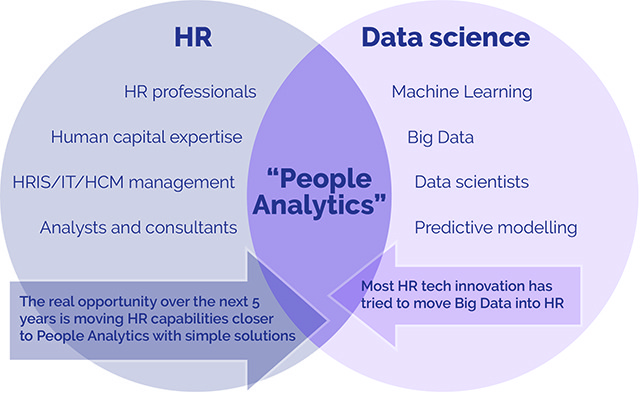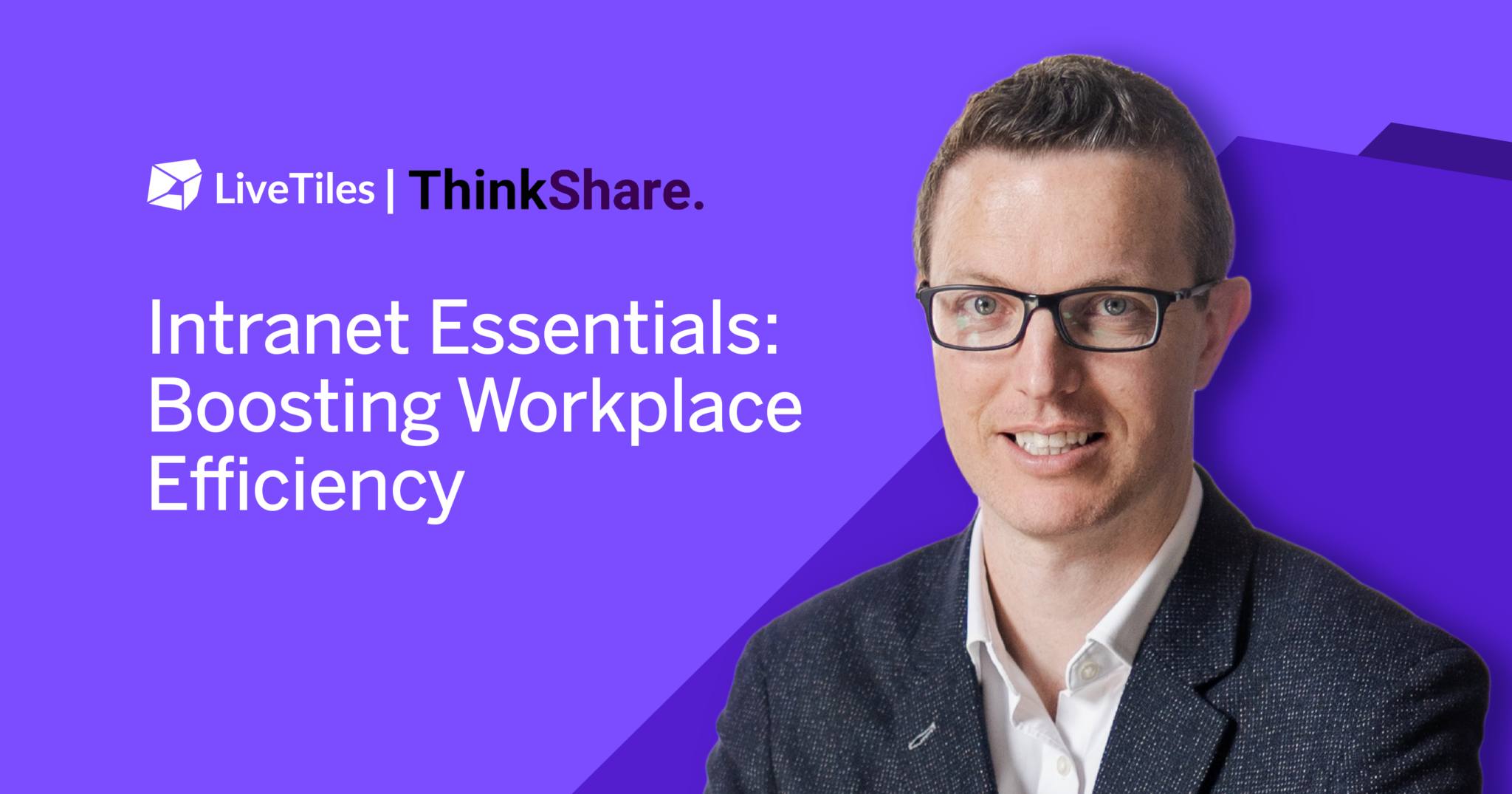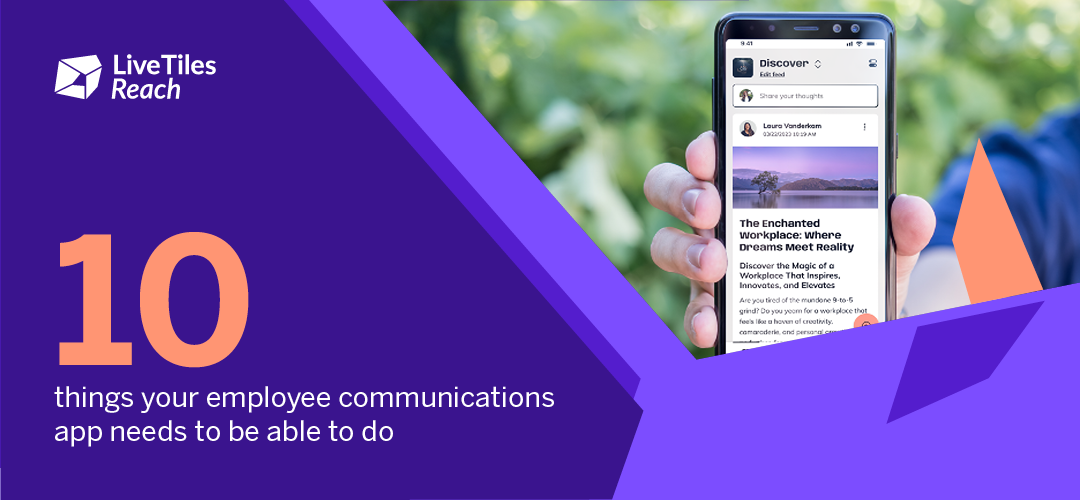Original article published by LiveTiles Strategic Partner, Zegami Technologies.
As many companies explore HR analytics for the first time, it is common for the organization to struggle with how exactly to integrate the Analytics function within HR. In resolving this dilemma, the right analytics programs can offer the potential for true value-creation (i.e., ROI), through the right synergies.
The Three Common Ways to Integrate Analytics
For most companies, there are three possible approaches to integration:
1) Keep Analytics outside of HR. Maintain a group of Analytics experts on a Data Scientist team that sits separate and apart from HR, outside the function altogether but occasionally interfacing with them.
2) Consolidate Analytics as a sub-function in HR. Have an Analytics function, under the umbrella of HR, that sits side-by-side with the other more traditional functions (like Compensation & Benefits, Talent, Recruiting, etc.), and works in parallel with them.
3) Integrate Analytics experts on smaller HR teams. Split up the Analytics function into smaller teams, of 1-to-3 people, each supporting the various HR sub-functions, but also reporting in a matrix-style to a Head of Analytics.
And, of course, there is a fourth option: to not use Analytics at all; and that’s the current state for a distressingly large number of companies.
The Problem
The problems that can arise related to the lack of traditional overlap between analytics and HR skills. Correspondingly, there are issues relating to the headcount costs of hiring and maintaining data analysts. HR Analysts tend to be very good at computer coding and big data, or very good at HR concepts, but it’s hard to find employees with both sets of skills—and this will continue to be a dynamic until the two functions become more integrated.
A completely separate HR Analytics team may have only a shallow understanding of each HR discipline (compensation, rewards, talent management, etc.), and thus be an expensive way to maintain a team of well-trained employees who do not add much value beyond routine HR reporting. Correspondingly, the more integrated Analytics is with HR, the more headcount needs to be invested, either in more analysts, or deeper training in HR concepts. Having Analytics experts broken up across the different HR sub-functions can find more insights, but at a higher cost, and with less centralization.
How can having the right Analytics tool create ROI here? In short, simple tools allow HR and Analytics to “speak the same language.” If the tool is so easy to use, and so accessible that HR professionals do not require any special training, then an HR function can bring their current staff up-to-speed with analytics with no additional headcount—and very little additional training—thus significantly saving costs.
This is the first ROI of a good analytics tool – rather than spending large sums on headcount for new employees, the right tool can allow your current employees to understand, explore and report on complex data issues. In short, the right tool can allow organizations to stop trying to bring Analytics closer to HR; instead, they can bring HR closer to Analytics.

Example: The Process to Fit Analytics within the Organizational Structure
Take the case of an HR organization trying unsuccessfully to reposition Analytics in multiple different ways within its structure. At first, Data Science was an entirely new, and separate, discipline, but over time the team expanded their purview into other functions like Marketing (customer analytics), IT (web site traffic analysis)—and HR (people analytics). The dynamics of data science and HR people working together took form in several different stages:
Stage 1 When data science was first exposed to HR (Option1 above), the problems with non-overlapping technical/HR skillsets became apparent: while very versed in computer coding and statistical knowledge, most of the data analysts did not command a knowledge of the conceptual problems of HR (for instance, being able to explain the difference between a high-performing employee and a high-potential employee, or understanding matters of succession planning or talent management). Lacking that versatility, the insights they were able to glean were minimal—i.e., very little real-world behavior could be interpreted from looking at the data sets alone. Sadly, concepts like retention, performance measurement, and employee engagement were left barely explored as the data science team tended to “focus on what we know”.
Stage 2 The next step, as more data analysts were hired, was to begin to integrate Analytics into HR as a specific team: called “HR Analytics/Business Insights” (Option 2). In this arrangement, one group of HR-focused data analysts would support all the various HR sub-functions (Comp & Ben, Recruitment, Talent, etc.). While this allowed for analysts who were conversant in HR tasks, the nature of workflow proved a challenge. Questions began to swirl around what the HR Analytics team’s mandate truly was; how was it to interface with any given HR function?
Were the HR functions supposed to “task” the HR Analytics team with analyses to run? Were the analysts free to pursue their own initiatives? The problem here was that this company did not articulate—to themselves—what the role of the HR Analytics team would be, responsive or proactive, insights-finding or report-generating. The workflows eventually became uni-directional: everyone asked for things from Analytics, and because the analysts were generalists, those requests needed to be simple enough for the team to handle. In effect, the Analytics team became simply a reporting function, generating stock HR reports at regular intervals, rather than proactively generating actual insights. This is a critical choice for any company employing this model: HR organizations must articulate to their teams what their roles are, reporting vs. true insights-finding and whether the team has the relevant expertise and tools for each.
Stage 3 Finally, the company pursued a third model; the HR Analytics function was disaggregated further (Option 3). Now, HR Analytics experts would sit in each of the HR teams, with the benefit of learning the concepts of the HR disciplines well enough to search for real insights. In this model, data analysts were much closer to the relevant data; however, centrality was lost. The Analytics expert sitting on the Talent team knew talent, and the expert sitting on the Recruiting team knew the candidate screening process, but there was no longer a single perspective that allowed analytics to be run across HR functions. How to find the value in the interplay across functions, where data from two different functions needed to be combined? It wasn’t possible.
How Zegami HR Can Help
The core problem for all three structures was the same: the analytics tools were complex, and thus only a small number of employees could utilize them to create insights. When coupled with the need to have situational and conceptual HR knowledge, only very few people could learn everything. They needed a tool that took some of the analytical pressure off of the HR Analytics team.
This is the value of simple, user-friendly analytical tools: it allows you to arm your HR organization from the bottom up with the tools for generating insights. Shared tools across data analysts and more soft-skilled generalists allow everyone to speak the same language internally.
Zegami HR was built precisely for this purpose: any HR user, even one not proficient in data science tools, or even Excel, can analyze HR data visually, intuitively, and quickly. Many of the requests that would’ve gone to an HR data scientist could just handle themselves. This would thus free up the Analytics team to pursue their own initiatives, without being bogged down with inbound data requests. When your current HR staff can get to the same level of insights as a data scientist—without the data science training—you save yourself a lot of headaches in how you organize the HR function. In effect, you either nullify the need for an HR Analytics/Business Insights function, or you at least lessen the workload on them. In short, you make everyone on your HR team a big data expert.
Summary: The ROI that can be gained from a program that synergizes Analytics with HR:
• Traditional HR professionals and analytics experts have non-overlapping skill sets.
• The right analytics tools in the hands of HR professionals allows them to do data analytics work, without the need to rely solely on data scientists or Analytics teams.
• This way, real data insights can come from non-analytics experts, simultaneously broadening the base of people who add value and freeing up the bandwidth of the Analytics team for their own initiatives.
• You can thus structure your HR organization—and the analytics team within it—any way you want: the right analytics platform creates this flexibility.
To learn more, download The 5 ROIs of Zegami HR White Paper.






